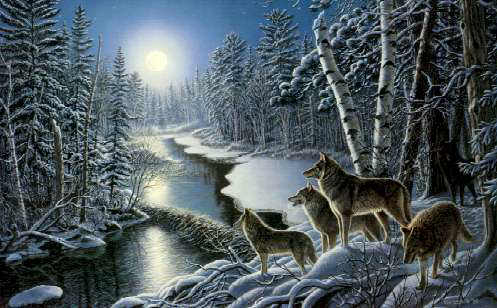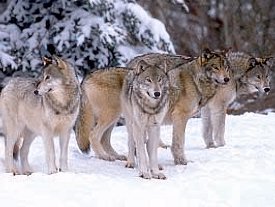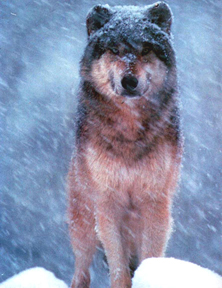Prepare for the Winter
|
In the autumn wolves will grow a "coat" that keeps them warm during the winter, even through the coldest nights, that coat will keep them warm. Because of this coat the wolves will loss no body heat through it.

(Snow will not melt on a wolf's fur) At night the wolves curl up and cover their
noses with their long tails. They do this because it holds the warm air exhaled over the feet
and nose, warming them. When a wolf inhales the air is filtered through the tail and is warmed
by the exhaled air before it is breathed in.
The wolves will eat alot in the fall, just before winter starts. Hunting is difficult in the winter, the pack may have periods of inactivity and extra stores of fat will help them to survive in these winter times. When spring finally comes the wolves emerge, this is a time of great excitement for the pack, often they run a round playing with eachother, but after this short interaction it is time to feed.
Depending on the depth of the snow, wolves will choose a path that is easy to follow,
the alpha wolf will form a single file line, the rest of the pack will follow, with the pups
last.
 They will follow old game trails, frozen lakes and other paths of least resistance.
They will follow old game trails, frozen lakes and other paths of least resistance.
When hunting in winter the wolf will conserve energy when ever possible, by following the same trail as the prey animal, staying upwind, and staying out of sight of the prey as long as possible. When it is time to strike the wolves will start wagging their tails with excitement. Sometimes when young pups are with the hunt they may dash after the prey in excitement and spoil the hunt.
Wolves prey mostly on young, sick or older animals that are past there prime. but wolves being opportunistic will go after healthy, strong animals too.
Winter lasts for six months and spring only three. Wolves must learn to survive in winter because of how long winter lasts.
